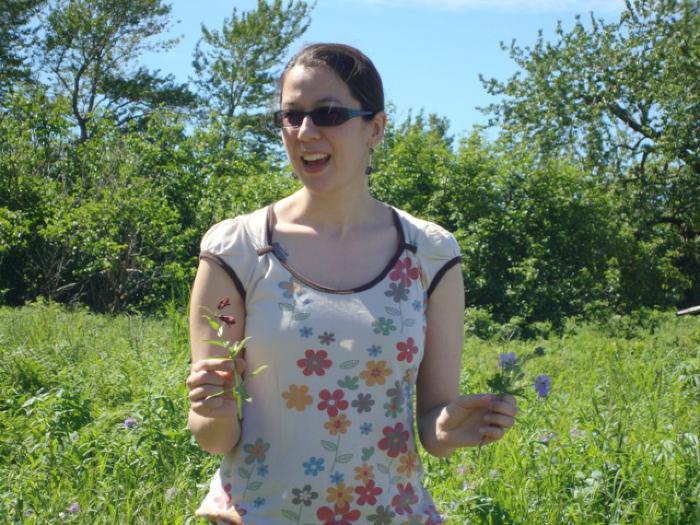Plants — Naut’staat
Ilait naut’staat yaatutaartut. – Some plants are poisonous.

Photo: April Counceller teaches a lesson on plant names.
Kodiak Island is often called Alaska’s Emerald Isle, a nickname that reflects its thick carpet of green summer plants. Abundant rain, mild temperatures, and long summer days combine to make the region’s mountains and meadows exceptionally productive for plant growth. There are about 650 known species of vascular plants in the archipelago, and botanists continue to identify more.
Kodiak’s plant life reflects the island’s natural and cultural histories. All of Kodiak’s plants are available in neighboring regions of Alaska. To date, botanists have not found any plant species unique to Kodiak. This reflects Kodiak’s proximity to the Alaska mainland. The Gulf of Alaska’s strong and persistent winds introduce plant spores from neighboring regions, and birds bring seeds to Kodiak in their droppings. Over the millennia, people have also introduced plants, both inadvertently and on purpose. For example, prehistoric visitors from the Alaska mainland probably brought seeds stuck to their clothing and belongings.
For Alutiiq people, plants represent an abundant source of food and raw materials. Like other subsistence pursuits, plant harvesting and use follow a predictable, seasonal rhythm in Alutiiq communities, from harvesting of tender spring greens to summer and fall berry picking, hauling wood for fuel, and manufacturing items from plant fibers.
A traditional story from Prince William Sound relates how some plants die each year while others live on. In one village, a female water lily married a male skunk cabbage. When the skunk cabbage died in the fall, the water lily’s parents were displeased and asked her to leave her husband. She refused, saying that he was still alive in his roots. And so she stayed with her husband, who returned each spring but died each fall.
